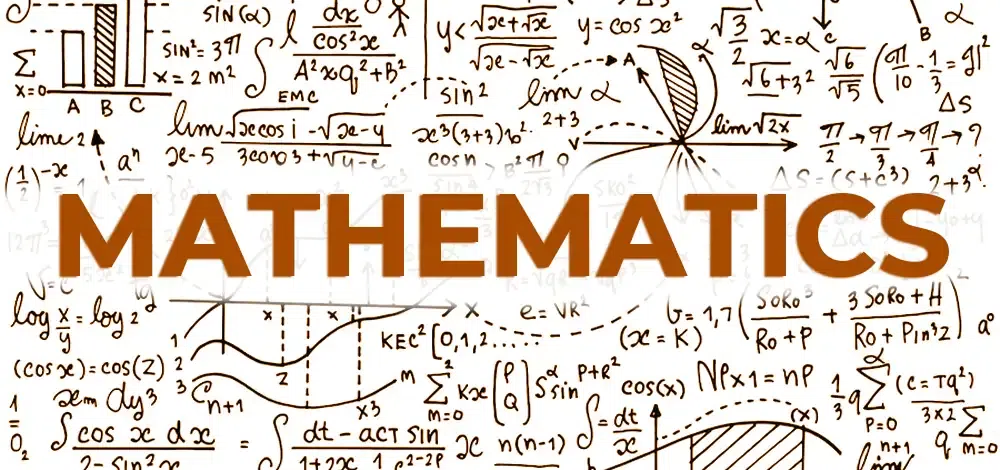Here’s a persuasive advertisement for ghostwriting services specifically tailored to the topic of Banach Fixed Point Theorem and its application to solving integral equations:
**Get Expert Help with Banach Fixed Point Theorem Assignments**
Struggling to grasp the intricacies of Banach Fixed Point Theorem? Stuck on a tricky integral equation problem? Our team of expert ghostwriters is here to help!
**Our Services:**
* Customized solutions to Banach Fixed Point Theorem problems
* Step-by-step proof and mathematical notation guidance
* Integral equation solving with precise calculations
* Research papers and essays on Banach Fixed Point Theorem applications
**Our Advantages:**
* Ph.D. qualified writers with extensive experience in mathematics
* Fast turnaround times without compromising on quality
* 100% original and plagiarism-free work
* Confidentiality guaranteed
**Why Choose Us?**
* Save time and effort on complex mathematical problems
* Improve your understanding of Banach Fixed Point Theorem with clear explanations
* Boost your grades with well-researched and accurately written assignments
Don’t let Banach Fixed Point Theorem assignments hold you back. Get expert help today and achieve academic success!
\[x_{n+1}(t)=v(t)+\mu\int_{a}^{b}k(t,s)x_{n}(s)ds,\ \ n=0,1,\dots\]
Proof
: We can write equation (2.9) as \(x=Tx\) where
\[Tx(t)=v(t)+\mu\int_{a}^{b}k(t,s)x(s)ds.\]The proof then follows from the Banach Fixed Point Theorem if we prove that \(T\) is a contraction on \(C[a,b]\). We have
\[d(Tx,Ty) = \sup_{t\in[a,b]}|Tx(t)-Ty(t)|\] \[= \sup_{t\in[a,b]}\left|v(t)+\mu\int_{a}^{b}k(t,s)x(s)ds-\left[v(t)+ \mu\int_{a}^{b}k(t,s)y(s)ds\right]\right|\] \[= \sup_{t\in[a,b]}\left|\mu\int_{a}^{b}k(t,s)[x(s)-y(s)]ds\right|\] \[\leq |\mu|\sup_{t\in[a,b]}\int_{a}^{b}|k(t,s)|x(s)-y(s)|ds\] \[\leq |\mu|M(b-a)d(x,y)=\alpha d(x,y).\]
Since
\[\alpha=|\mu|M(b-a)<1,\]
we have that \(T\) is a contraction on \(C[a,b]\).
**Remark 45**.: We can also apply the above method to the nonlinear integral equation
\[x(t)-\mu\int_{a}^{b}k(t,s,x(s))ds=v(t),\]
when
\[|k(t,s,u_{1})-k(t,s,u_{2})|\leq L|u_{1}-u_{2}|,\]
and
\[|\mu|<\frac{1}{L(b-a)}.\]
Now we will look at the Volterra integral equation.
**Definition 73** (Volterra Integral Equation).: Suppose \(v\in C[a,b]\) and \(k\in C([a,b]\times[a,t]).\) Then the _Volterra integral equation_ is an equation of the form
\[x(t)=\mu\int_{a}^{t}k(t,s)x(s)ds+v(t). \tag{2.10} \]\]
Note that the difference between the Volterra integral equation above and Fredholm integral equation defined in (2.9) is the upper limit of integration changed from a constant to a variable. We first prove a more general fixed point theorem. In the following by \(T^{n}\), we mean \(T\) composed with itself \(n\) times.
Proof
: Since \(T^{n}\) is a contraction on X, \(T^{n}\) has a unique fixed point \(x\in X\) so that \(T^{n}x=x\). Noting that
\[T^{n}(Tx)=T^{n+1}x=T(T^{n}x)=Tx,\]
we see that \(Tx\) is also a fixed point of \(T^{n}\), but there can be only one, so \(Tx=x\). Now, any fixed point \(x^{*}\) of \(T\) is also a fixed point of \(T^{n}\) since
\[T^{n}x^{*}=T^{n-1}(Tx^{*})=T^{n-1}x^{*}=\cdots=Tx^{*}=x^{*}.\]
It follows that \(x\) is the only fixed point of \(T\).
**Example 80**.: Let \(T:C[0,1]\to C[0,1]\) be a linear operator given by
\[Tx(t)=\int_{0}^{t}x(s)ds. \tag{2.11} \]\]
Then
* \(T\) is not a contraction on \(C[0,1]\).
* \(T\) has a unique fixed point \(x\equiv 0\).
* \(T^{n}\) are contractions on \(C[0,1]\) for all \(n\geq 2\).
Proof
:
* Notice that \[||T1-T0||=||T1||=\sup_{t\in[0,1]}t=1=||1-0||.\] Therefore we have that \(T\) is not a contraction on \(C[0,1]\).
* Notice that \[Tx(0)=\int_{0}^{0}x(s)ds=0,\] which implies that \(Tx(0)=0\) and so \(T\) has a unique fixed point at the function \(x\equiv 0\).
* We will proceed here by induction. First we show the base case of \(n=2\): \[T^{2}x(t) =\int_{0}^{t}Tx(s)\,ds=\int_{0}^{t}\left(\int_{0}^{s}x(s)du \right)ds\] \[\leq||x||\int_{0}^{t}\int_{0}^{s}duds\] \[=\frac{t^{2}}{2}||x||\leq\frac{1}{2}||x||\implies||T^{2}x||\leq \frac{1}{2}||x||.\] By induction it is easy to show that \[||T^{n}x||\leq\frac{1}{n!}||x||.\]
[MISSING_PAGE_FAIL:199]
So, we have from the induction that
\[d(T^{n}x,T^{n}y) = \sup_{t\in[a,b]}|T^{n}x(t)-T^{n}y(t)|\] \[\leq \frac{|\mu|^{n}M^{n}(b-a)^{n}}{n!}d(x,y).\]
So by letting
\[\alpha_{n}=\frac{|\mu|^{n}M^{n}(b-a)^{n}}{n!},\]
for any fixed \(\mu\) and sufficient large \(n\), we have that \(\alpha_{n}<1\) since \(\lim_{n\to\infty}\alpha_{n}=0\). Hence, \(T^{n}\) is a contraction on \(C[a,b]\) and the assertion follows from the Fredholm Integral Equation Theorem.
**Remark 46**.: If you would like to read more about fixed points, consult [6, 23, 32, 44]. Applications of fixed points to economics and game theory are studied in [13].
### Exercises
1. 1. Show that for all \(x,y\in X\) one has \(d(f(x),f(y))\leq\frac{1}{2}d(x,y)\), where \(d\) is the usual metric on real numbers. 5. Show that the system of equations: \[x_{1} =\frac{1}{4}x_{1}-\frac{1}{4}x_{2}+\frac{2}{15}x_{3}+3\] \[x_{2} =\frac{1}{4}x_{1}+\frac{1}{5}x_{2}+\frac{1}{2}x_{3}-1\] \[x_{3} =-\frac{1}{4}x_{1}+\frac{1}{3}x_{2}-\frac{1}{3}x_{3}+2\] has a unique solution. 6. Consider \(\mathbb{R}^{n}\) with the metric \(d(x,z)=\sum_{i=1}^{n}|x_{i}-z_{i}|\). Let \(T\) be a mapping from \(\mathbb{R}^{n}\) to itself defined by the system of linear equations \[y_{i}=\sum_{j=1}^{n}a_{ij}x_{j}+b_{i},\] where \(i=1,2,…,n\). Under what conditions \(T\) is a contraction? What will be the condition if the above metric is replaced by the Euclidean metric \(d(x,z)=\left[\sum_{i=1}^{n}|x_{i}-z_{i}|^{2}\right]^{\frac{1}{2}}\)? 7. If \(T\) is a mapping from a complete metric space \((M,d)\) into itself such that \(T^{m}\) is a contraction mapping for some \(m\in N\), then show that \(T\) has a unique fixed point. 8. * Convert the following initial value problem (IVP) to an integral equation and set up an iteration scheme to solve it \[\frac{dy}{dx}=3xy\ \ \mbox{where}\ \ y(0)=1.\] 9. If the partial derivative \(\frac{\partial f}{\partial x}\) of \(f\) exists and is continuous on a rectangle \(R\) (see Picard’s Theorem 86), show that \(f\) satisfies a Lipschitz condition on \(R\) with respect to second argument. 10. Let \(f\) be a real valued, twice continuously differentiable function on \([a,b]\). Let \(\widetilde{x}\) be a simple zero of \(f\) in (a,b). Show that Newton’s method defined by: \[x_{n+1}=g(x_{n})\;\;\text{and}\;\;g(x_{n})=x_{n}-\frac{f(x_{n})}{f^{\prime}(x _{n})}\] is a contraction in some neighborhood of \(\widetilde{x}\), so that the iterative sequence converges to \(\widetilde{x}\) for any \(x_{0}\) sufficiently close to \(\widetilde{x}\).
1. Let \(f:[1,2]\to[0,3]\) be a continuous function with \(f(1)=0\) and \(f(2)=3\). Show that \(f\) has a fixed point.
2. Let \(f:[a,b]\to[a,b]\) be a Lipschitz function with Lipschitz constant \(0
4. Show that for this contraction \(f\) there is no \(x\in X\) for which \(x=f(x)\). Does this contradict the Banach contraction mapping theorem?4. Let \(x_{0}>0\) be any positive number, and let \(x_{n+1}=(1+x_{n})^{-1}\), prove that this sequence converges, and find its limit.
* Given the initial value problem \[f^{\prime}(x)=1+x-f(x)\ \ \mbox{for}\ \frac{-1}{2}\leq x\leq\frac{1}{2}\ \ \mbox{where}\ f(0)=1,\] first show the mapping \(T:C[\frac{-1}{2},\frac{1}{2}]\to C[\frac{-1}{2},\frac{1}{2}]\) defined by \[Tf(x)=1+x+\frac{1}{2}x^{2}-\int_{0}^{x}f(t)dt\] is a contraction, then set up an iteration scheme to solve it.

发表回复